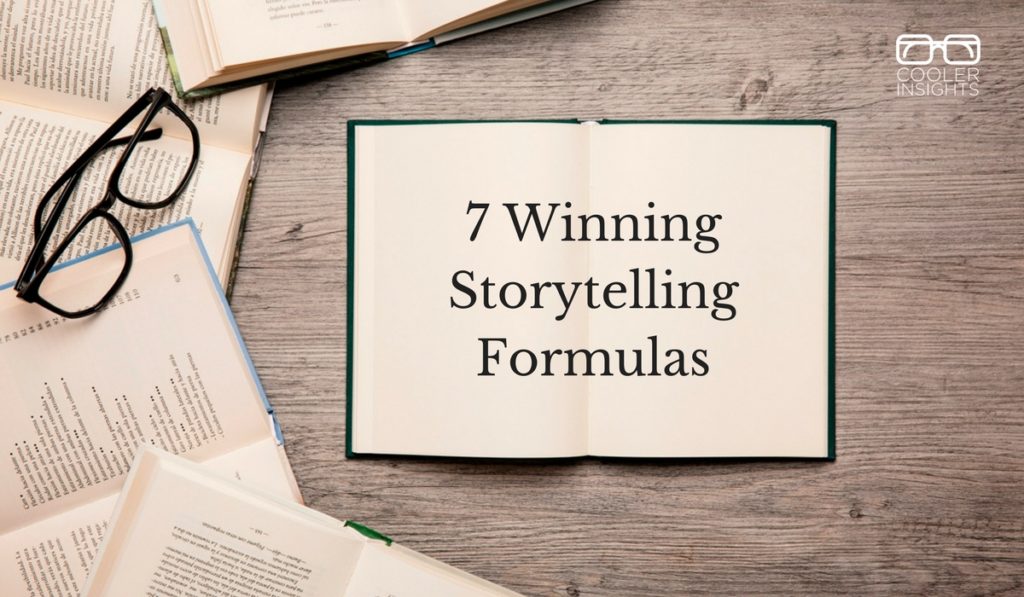
Original image from Freepik
Like a good wine, great stories only get better with age.
Many of the world’s most memorable stories were written a long time ago. Timeless tales like David versus Goliath, the Odyssey, Romeo and Juliet, and The Ugly Duckling are told and retold, enchanting readers and listeners for generations.
While our preferred media of consumption shifts from physical to digital, our love for stories do not change. Just take a look at your Facebook newsfeed to see what I mean.
As a social media marketer, you need to deploy the power of storytelling to attract readers and viewers, stimulate their interest, and build brand recall.
How can you do so effectively without wasting numerous hours (and days)? The answer lies in following one of these time-tested narrative formulas and adapting it for a social media audience.
Let us dive into each of these, and consider how they could be used online.
#1 AIDA – Attention Interest Desire Action
The age-old model of AIDA has been a mainstay of advertising for decades. While it prescribes a specific order of emotion in a particular messaging strategy, there are variations to the theme.
The acronym itself stands for…
- Attention: Attract your audience with attention-grabbing image or headline
- Interest: Stimulate their interest by describing your main benefit
- Desire: Deepen their desire further by providing further benefits
- Action: Provide a clear Call To Action (CTA)
Consider the following Facebook ad by CreativeLive. Both the image and the overlay copy “Food Photography” is designed to drive attention, while the copy above triggers interest and stimulates desire. The CTA in this ad is a simple “Watch Preview” which is clearly communicated too.
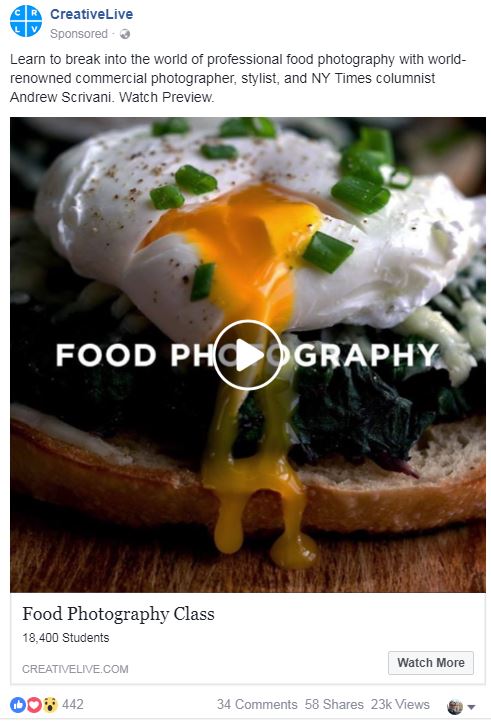
#2 The Three Act Structure
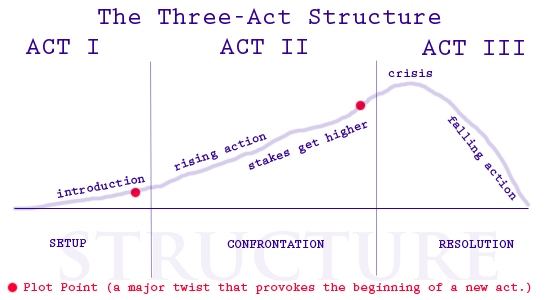
Courtesy of the elements of cinema
Another age-old structure widely used in storytelling, the 3-act structure can be found in many stories, movies, and television serials.
Apparently, this method was used in stories as old as Aesop’s fables, as well as the plays of William Shakespeare.
In a nutshell, the 3 acts are labeled as:
- Act I: Setup where the stage is set and character(s) introduced.
- Act II: Confrontation where the problems faced are highlighted and built up.
- Act III: Resolution of the problem, usually with your product or service.
Here’s an example of a 3-act structure used in a… wait for this… Real Estate Divorce Ad.
While the ending may not be a fairytale one, this Facebook ad provides the setup (divorce), presents a confrontation (stress of selling a home), and resolves it (guide to selling it faster). This closely follows a 3-act structure.

Courtesy of Easy Agent Pro
Here’s another storytelling example, this time from SPRING Singapore, which featured the Three Act Structure as follows:
- Act 1 (Setup): Company wanting to branch into take-home soup packs (The Soup Spoon)
- Act 2 (Confrontation + Crisis): 14-day shelf life of soup packs too short for retailers to carry
- Act 3 (Resolution): SPRING’s CDG helped them extend shelf life of products to 120 days

#3 String of Pearls
Commonly used in advertising copywriting, the idea here is for you to string together a series of details which act as “selling points” one after another.
While each “pearl” is complete in some way, stringing them all together helps to make your story more compelling.
Here’s an example from DBS Bank. In this Facebook carousel ad, the bank used a series of images and benefits to strengthen the value proposition to their target audiences of small business owners. Collectively, these help to strengthen the value to their potential clients.
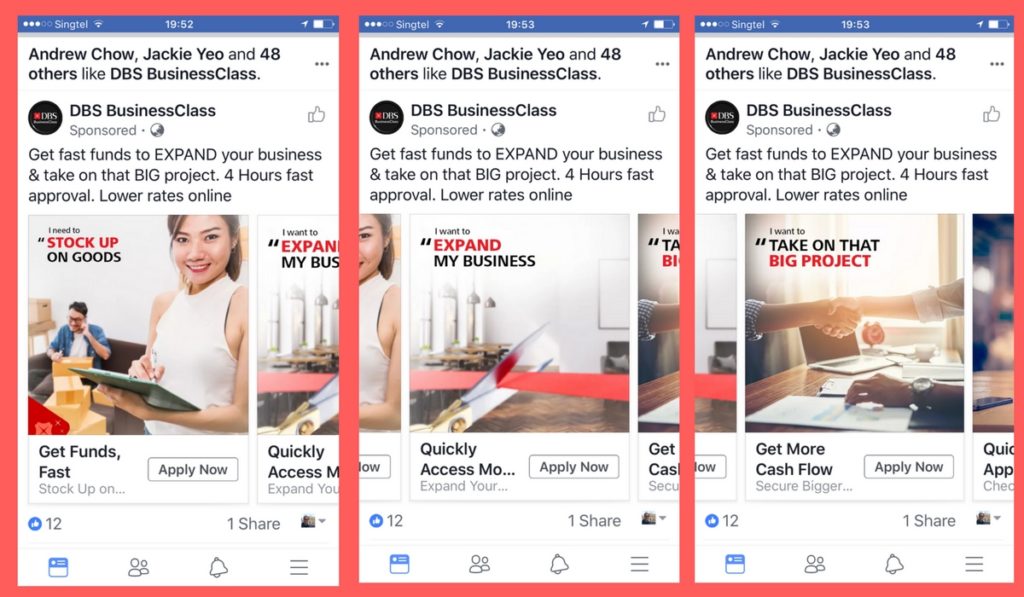
#4 Star-Chain-Hook
Developed by Frank Dignan, this simple yet effective formula works especially well for social media posts and ads.
First, start your story with an attention-grabbing opening which is positive and upbeat. Next, create a chain of benefits, facts, and reasons to turn attention to interest and then to desire. Finally, end it with a strong call to action which makes it easy for your audience to respond.
In short…
- Star – Your product/service/idea
- Chain – A series of facts, sources, benefits, and reasons
- Hook – The call to action
Here’s an example from Kayak. See if you can identify what the Star, Chain and Hook in this Facebook ad are.

#5 In Media Res
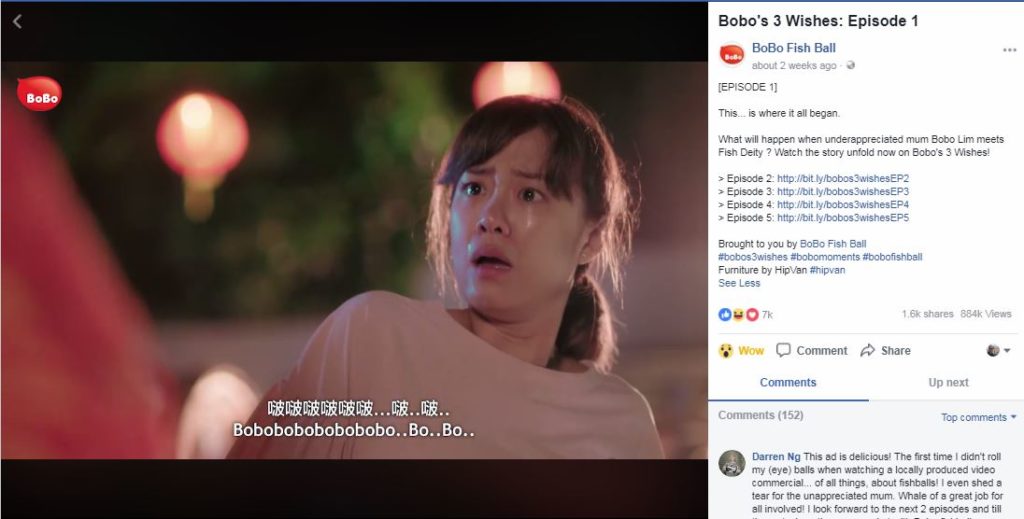
Ever watched a video or read a story where you are suddenly thrust into the thick of the action? That’s how in media res works.
Known in Latin as “in the midst of things”, the advantage of this storytelling technique is that your audience’s attention is immediately captured. Sometimes, in medias res may involve using flashbacks or other nonlinear narratives to fill in the backstory.
Examples of this technique is used in numerous Hollywood movies like the Pulp Fiction series by Quentin Tarantino and Star Wars: A New Hope where the first scene is a space battle.
In social media, a great example is seen in a Facebook video storytelling series by frozen seafood distributor Bobo Fishball. In the first few seconds of the first episode, viewers are immediately intrigued by the main protagonist (a beleaguered working mother) facing up to a monstrous looking being.
Go watch it to see what I mean!
#6 Freytag’s Pyramid

Courtesy of Solqushorts
First created by Gustav Freytag, this storytelling structure is an expansion of the three act structure and comprises the following sequence:
- Exposition: Provide background and context
- Rising action: Build of conflicts and challenges which leads up to the climax
- Climax: The proverbial turning point in the story (usually the most exciting part)
- Falling action: From the climax, the action continues with a resolution of the conflict action from the climax
- Dénouement: This forms the ending of the story, with a satisfying conclusion
Apparently, the Freytag Pyramid structure could be seen in the stories by Shakespeare and ancient Greek storytellers.
Here is an example of how Freytag’s Pyramid is used as a narrative structure in a text post on LinkedIn by master storyteller Oleg Vishnepolsky.
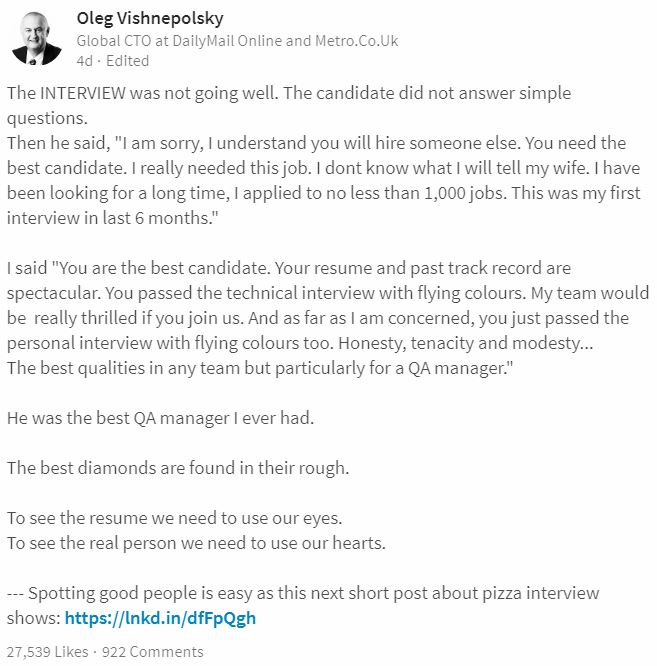
Just look at how the context of the story is first provided, followed by a rising conflict (the interview response by the candidate), climax (announcement by interviewer that “you are the best candidate.”), falling action (“He was the best QA manager I ever had.”) and finally conclusion.
#7 The Hero’s Journey (or Monomyth)

Courtesy of Wikimedia Commons
Credited to Joseph Campbell, the Hero’s Journey or Monomyth is widely used in ancient and contemporary stories. They include Biblical stories (eg Moses), The Lord of the Rings, Harry Potter, Star Wars, and many others.
In Campbell’s original piece, a total of 17 stages are described. While some myths may have all stages, most focus on only one of the stages or may present them in different sequences. Beyond the hero herself, the Monomyth often features helpers, mentors and adversaries.
The 17 stages may be organized in a number of ways, including division into three “acts” or sections:
- Departure (also Separation)
- Initiation (sometimes subdivided into Descent and Initiation)
- Return with a reward or gift
Here’s an entertaining short video you can watch which accurately describes the stages of the Hero’s Journey.
As you’d imagine, there are quite a few examples of social media storytelling using the Hero’s Journey as a base. Not all of them have the complete 17 stages. Most of the examples I’m aware of are videos or podcasts.
Here’s one featuring a new Kia car and actor Melissa McCarthy on YouTube. See if you can identify who the hero, mentor, adversary, challenge, transformation, and rewards are.
https://www.youtube.com/watch?v=31R3v1f_Ky0
Here’s another from the University of Western Sydney, which is simply unforgettable. Watch it and see if you can trace the different stages of the Hero’s Journey in this YouTube video which is also an ad.
https://www.youtube.com/watch?v=buA3tsGnp2s
Conclusion
As you can see, there are numerous ways to craft your brand and product stories on social media.
By using a storytelling formula like the ones above, you can shortcut the time needed to create endearing and engaging content. Feel free to mix and match them for your regular posts, advertising campaigns, or corporate brand storytelling efforts.
Are there any storytelling formulas which you like better than others? I’d love to read your thoughts.
